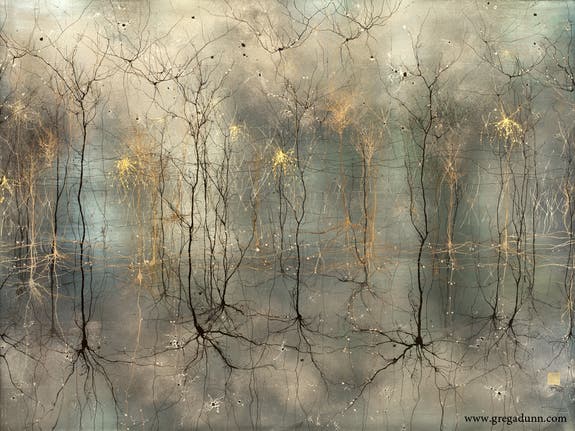
The human brain is often described as the most beautiful organism in the Universe. We say this because of the beautiful things the mind, sustained by the brain, can create and imagine. Greg Dunn earned his PhD in Neuroscience at the University of Pennsylvania in 2011, but while his colleagues are fiddling with microscopes to unravel the inner workings of brain cells, he works with a paintbrush to magnify neurons on a canvas. His work shows a brain whose beauty transcends romanticism and awes in its raw form.
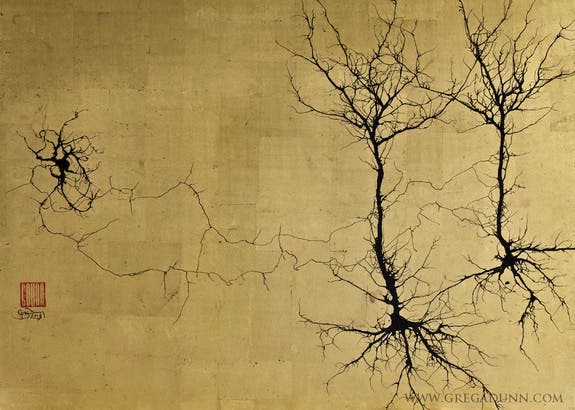
Dunn was always inspired and fascinated by the sumi-e paintbrush style, very popular in Asian works. Simplicity is the most outstanding characteristic of Sumi-e. An economy of brush strokes is used to communicate the essence of the subject.
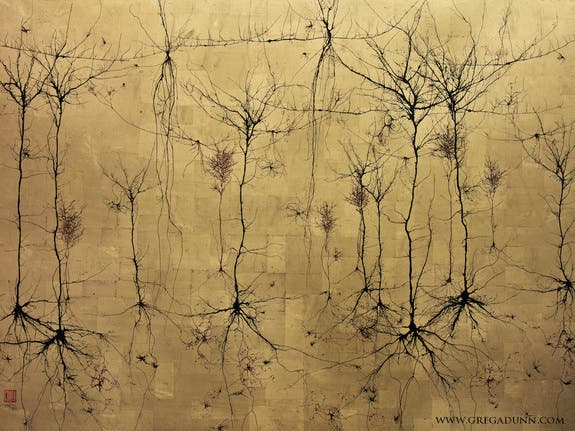
Driven by passion, the neuroscientist tried to capture the essence of the brain through unconventional art. Of course, he uses microscope images for inspiration, but all the neurons are painted by him.
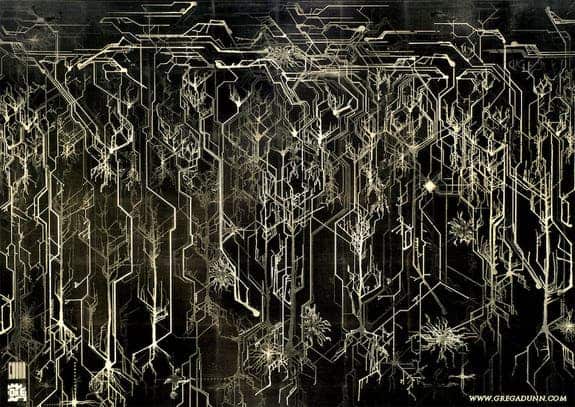
According to Dunn, the artist first blows some ink around a non-absorbing paper. The turbulence and the paper’s texture causes tree-like ink to splatter, which look like neurons. What makes it so effective is in fact the variance and randomness blowing the ink introduces. If you try to paint neurons by hand, you’ll adhere to some unconscious patterns that will affect the quality of the sumi-e paintings, says Dunn.
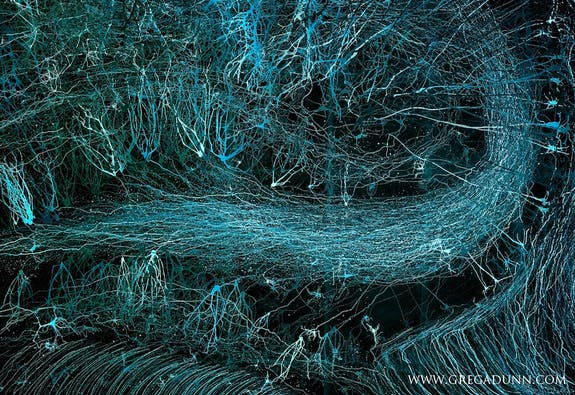
Besides paintings, Dunn also etches ink paintings on metal sheets. He first scans the ink painting then uses software to create a high-resolution image out of hatched lines; the angles of these lines determine how light will reflect off the image. Besides photolithography, the artist also adds lights and shadowboxes around the frames of the engravings, to add different colors. The Brainbow Hippocampus below, for instance, is the same work, but under different lights.
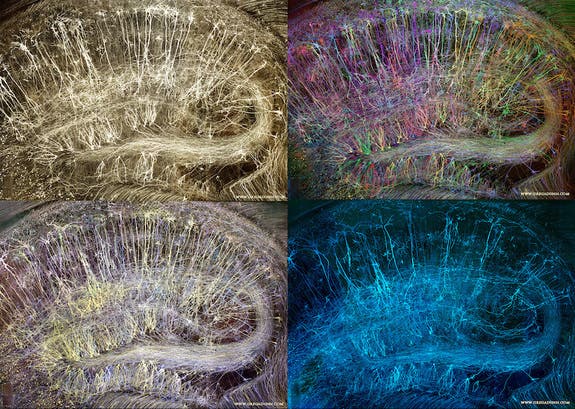
For more on Dunn and his work, visit his website.
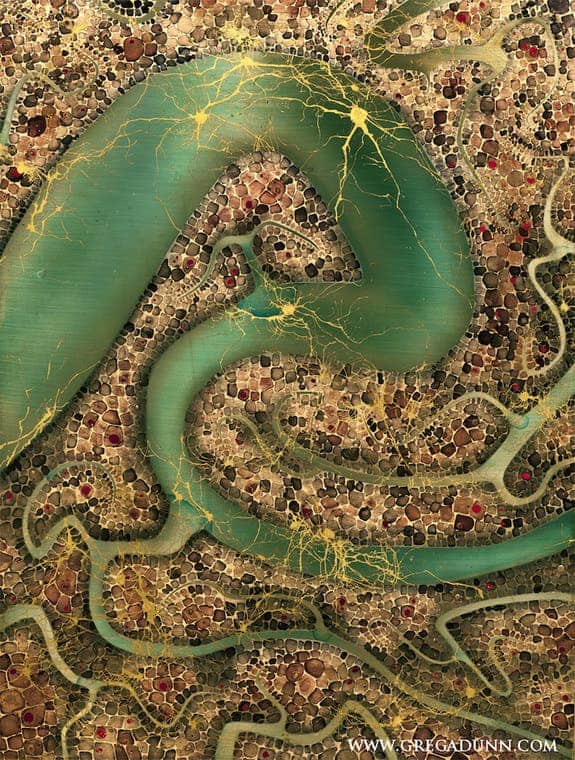
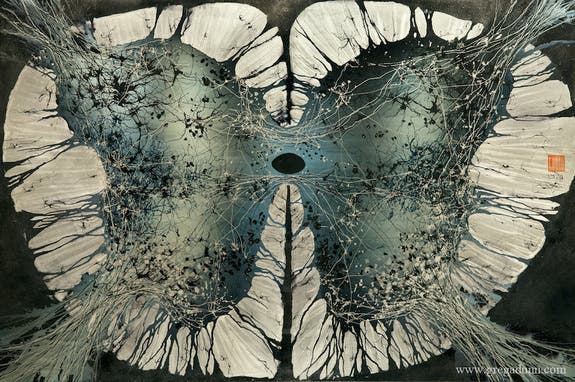
Was this helpful?



